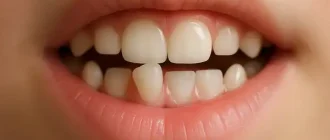Finding a loose tooth in your adult years can be more than just a little alarming. Unlike when you were a child and excited to leave a tooth under your pillow for the tooth fairy, a wobbly tooth now raises serious concerns. What can you do if your tooth feels loose?
Causes of Tooth Looseness
| Cause | Percentage of Cases |
|---|---|
| Periodontal Disease | 47% |
| Trauma/Injury | 25% |
| Bruxism (Teeth Grinding) | 15% |
| Other Causes | 13% |
This chart illustrates the primary causes of tooth looseness, emphasizing the impact of periodontal disease and other contributing factors.
Why Is Your Tooth Loose in the First Place?
A loose tooth doesn’t just happen out of nowhere. There are usually underlying causes, and some of them might surprise you. Gum disease, also known as periodontal disease, is the leading cause of loose teeth in adults. According to the CDC, nearly 47% of adults aged 30 years and older have some form of periodontal disease. If untreated, this condition can damage the supporting bone around your teeth, ultimately leading to looseness.
Another common cause is trauma or injury. Did you take a hit during a basketball game or bite down on something harder than you bargained for? These kinds of sudden impacts can also lead to a loose tooth. Grinding your teeth (a condition called bruxism) is another culprit—the constant pressure wears down the supporting structures over time.
Did You Know?
The National Institute of Dental and Craniofacial Research states that bruxism affects around 10% of adults in the U.S., often without them even realizing it. [Source: NIH]
Can a Loose Tooth Tighten Back Up?
This is often the first question people ask—and rightly so. The answer is: it depends. If the looseness is caused by trauma but the underlying structure (like your gums and bone) is still healthy, there’s a good chance that your tooth can re-stabilize on its own. Resting the tooth by avoiding hard foods and practicing good oral hygiene can help speed up this process.
However, if your tooth is loose due to gum disease, the solution is more involved. Treatments like deep cleaning (scaling and root planing) are often needed to remove the bacteria below the gumline and give your gums a chance to heal. In more severe cases, surgery might be necessary.
Is It Time to Call the Dentist?
If you notice a loose tooth, don’t ignore it. The earlier you address the issue, the better your chances are of saving the tooth. In fact, research suggests that patients who seek early intervention for periodontal issues have an 80% higher chance of successful treatment compared to those who wait.
Success Rates of Different Treatments for Loose Teeth
| Treatment Option | Success Rate |
|---|---|
| Scaling and Root Planing (Gum Disease) | 70-80% |
| Splinting (Trauma/Injury) | 80-90% |
| Night Guard (Bruxism) | 60-75% |
This chart displays the success rates of different treatment options for loose teeth, highlighting the varying effectiveness based on the underlying cause.
One of the key diagnostic tools your dentist might use is an X-ray to see how much bone support is left around your tooth. This helps determine the best course of action, which could range from a deep cleaning to more extensive surgical options.
Table: Common Treatments for Loose Teeth
| Cause | Treatment Option | Success Rate |
|---|---|---|
| Gum Disease | Scaling and Root Planing | 70-80% |
| Trauma/Injury | Rest and Splinting | 80-90% |
| Bruxism (Grinding) | Night Guard | 60-75% |
What Can You Do at Home?
While visiting a dentist is essential, there are things you can do at home to help stabilize a loose tooth. First, maintain good oral hygiene—yes, that means brushing gently twice a day and flossing carefully to avoid disturbing the tooth. Consider using an antimicrobial mouthwash to reduce any bacterial buildup that might exacerbate the issue.
If you grind your teeth, investing in a mouth guard (readily available at most drugstores) can make a world of difference. Remember, prevention is always better than treatment, especially when it comes to your pearly whites.
Did You Know?
A 2019 survey found that approximately 13% of adults avoid going to the dentist due to fear, leading to untreated issues like loose teeth. [Source: ADA]
When Should You Consider Extraction?
Nobody likes the idea of losing a tooth, but sometimes extraction is the only viable option—especially if the tooth is too far gone or affecting neighboring teeth. Modern dentistry offers several alternatives to replace a lost tooth, including implants, bridges, and dentures, which are more comfortable and effective than ever before.
Dental implants, for instance, have a success rate of over 95% and can last for decades with proper care. They provide a stable and natural-looking solution that doesn’t require altering surrounding teeth like traditional bridges.
Cost Comparison of Different Treatment Methods for Loose Teeth
| Treatment Option | Average Cost (USD) |
|---|---|
| Scaling and Root Planing | $500 – $1,000 |
| Splinting | $200 – $400 |
| Dental Implant | $3,000 – $4,500 |
This chart compares the average costs of different treatment methods for loose teeth, helping you understand the financial implications of each option.
A Note from Our Editors
If your tooth is loose, it’s not the end of the world—but it’s also not something to ignore. Early intervention can save your smile and prevent more invasive (and costly) treatments down the road. So, take action, see your dentist, and keep smiling. Remember, a little care today can make a big difference tomorrow.






